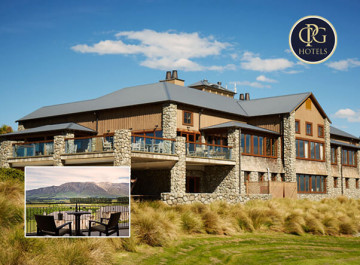Step into the Milky Way at the Space Place at Carter Observatory, Wellington
Wellington, the capital city of New Zealand, is well known for an abundance of arts, culture and heritage, as well as a thriving food scene. Situated atop the hills in the Wellington Botanical Gardens, the Space Place (previously known as the Carter Observatory) overlooks Oriental Bay and is a testament to the culture and heritage you’d expect to find in Wellington. The Carter Observatory was first opened many years ago in 1941 and after undergoing refurbishments, re-opened its doors in March 2010.
For those looking for something memorable to do in Wellington a visit on either a Tuesday, Thursday or Saturday evening is a must as they are open late, providing an opportunity to star gaze into the Southern Hemisphere's night skies. The Space Place is open Saturday and Sunday from 10am, Tuesday and Thursday from 4pm till late.
Check their website for current hours and the daily planetarium shows.

The Carter Observatory visible beneath the night sky of the Milky Way – Photo credit Mark Gee
While the Carter Observatory is home to three telescopes, you will most likely view the stars with the Thomas Cooke telescope which is the main telescope used by visitors to the observatory. The Thomas Cooke telescope weighs an impressive two tonnes and was made over 100 years ago in 1867! The telescope has been resident at the Carter Observatory since 1940 and was used for astronomical research until 1970, when it then became used for night time star gazing by visitors to the Observatory.

Viewing the Southern hemisphere stars with the Thomas Cooke telescope
Star gazing in the Southern hemisphere is ever changing, and depending on the time of the year that you visit, some stars and constellations may or may not be visible.
Perhaps one of the most well-known constellations in the Southern hemisphere is the Southern Cross (or Crux as it’s known in Latin) and is a great starting point for navigating the stars of the Milky Way. The position of the Southern Cross does change as the Earth rotates but can generally be found by looking for the Pointers; the two bright stars that point towards it. Another easy one to spot is Orion’s Belt; three big stars in the constellation of Orion the Hunter. The three stars of the belt form a straight line and are fairly evenly spaced.
As well as viewing the stars of the Milky Way, a Planetarium show is well worth it. The Carter Observatory Planetarium shows take you on a digital adventure through outer space, and cover everything from the Big Bang, time and matter, the Maori story of creation and even the possibility of life on other planets!

Carter Observatory’s Pelorus Trust Planetarium show
This is definitely one to put on your list of must do Wellington attractions. Find out more about the Space Place at Carter Observatory here.



